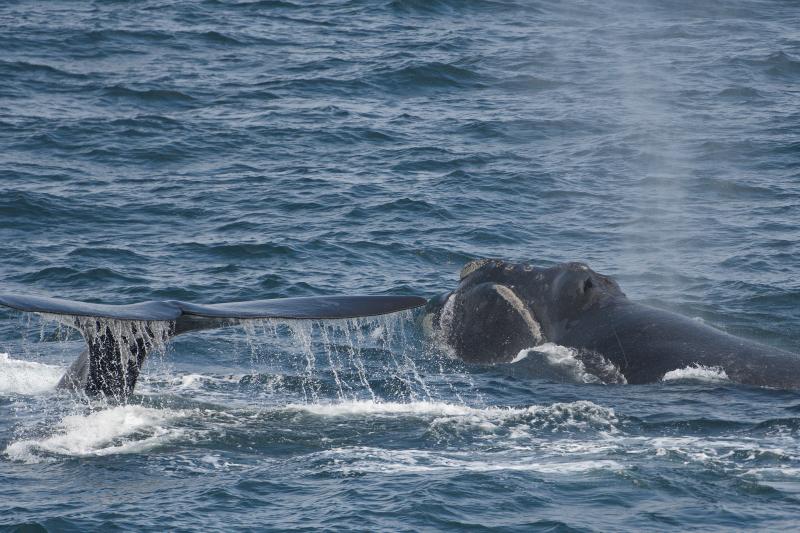To locate endangered North Pacific right whales, scientists listen for their calls in Alaskan waters believed to be a part of their historical feeding grounds. To do this, scientists use underwater microphones, known as hydrophones. Remarkably, the NOAA Fisheries/University of Washington scientific team documented sounds from these rare right whales at all six acoustic mooring sites in the Aleutian Island passes and northern Gulf of Alaska. This is remarkable because it is believed that fewer than 50 animals remain in the eastern population. The findings also support the idea that the whales use this area as a migratory corridor.
“We detected these whales in both the eastern Aleutian Island passes and northern Gulf of Alaska habitats,” said lead author Dana Wright, conservation biologist for the University of Washington Cooperative Institute for Climate, Ocean, & Ecosystem Studies. “We observed peaks in calling between June and August at most sites, which supports the belief that these areas are currently being used as feeding grounds.”
The scientists were listening for the two most common sounds that these rare whales produce: the upcall and the gunshot call. North Pacific right whale upcalls follow an upsweep pattern and occur in irregular spaced clusters of calls, called bouts. In contrast, their gunshot calls are very short (less than 1 second) broadband signals. They’re made up of a wide range of sound frequencies—like the snap of your finger or a clap. These calls can occur in a pattern to create songs.
The greatest number of detections occurred in the whale’s designated critical habitat off Kodiak, Alaska between September and November. Right whales have been acoustically detected at mooring sites further north, in the whale’s Bering Sea critical habitat, at the same time of year.
In addition to summer and fall, right whales were also detected for at least 1 day at each of the mooring sites between December and April. This is when scientists believe the species migrates between its northern feeding grounds to lower latitudes.
“One of the great mysteries about this species is that we still don’t know where they go once they leave the feeding grounds,” says Wright. “One hypothesis is that these whales swim along the coastline of the northern Gulf of Alaska, between Kodiak Island and the Aleutian Islands, as part of their migratory route. The winter detections in our dataset are helping to piece together the puzzle.”
The timing of overwinter (roughly December–May) detections at the Aleutian Islands Pass sites relative to the Bering Sea detections supports their use as a migratory corridor. This study area includes Unimak Pass, a major vessel traffic corridor where right whales have been acoustically detected in prior years.
The Importance of Identifying Habitat for Eastern North Pacific Right Whale Population Recovery
The genetically distinct eastern population of the North Pacific right whale is one of the most endangered large whales in the world. This is largely due to targeted, extensive legal and illegal commercial hunting in the 19th and 20th centuries.
Historically, North Pacific right whales’ range included the Gulf of Alaska, eastern Aleutian Islands, and eastern Bering Sea. Stomach content data from harvested whales suggest that these areas were feeding grounds. However, the contemporary distribution of the eastern population, including possible migratory routes, is poorly known.
Data from this study and other recent research led by Wright using ratios of amino acids in the skin tissue are helping to uncover a record of migration and foraging.
“Given their remote and elusive nature, opportunistic photographs taken by the public can also be really helpful,” said co-author Jessica Crance, marine mammal biologist, Alaska Fisheries Science Center. “In fact, the first visual evidence of a North Pacific right whale feeding in the Bering Sea during winter months was provided by a fisherman.”
If you are ever fortunate enough to spot a North Pacific right whale, your photos could provide another valuable clue about their movements.
Remember to keep a safe distance (500 yards at minimum). Take photos or video of the sides of the whale’s head if you can. Please send the photos or videos along with your name, and the location where you made your sighting, to [email protected].




